Massagetes
Q379821Massagetes (Greek Μασσαγέτας): a nomad tribe in Central Asia.
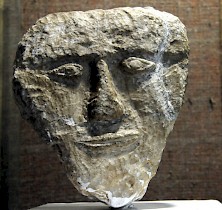
The Massagetes were an ancient tribe in Central Asia, mentioned several times in Greek sources of the sixth, fifth, and fourth century BCE. (As we will see below, later references are suspect.) Scholarly attempts to identify them in sources written in other languages have, so far, been unsuccessful. Still, we may assume that the Massagetes are more than a Greek fantasy about a nation on the edges of the world (like the Hyperboreans), because the name “Massagetes” is recognizable as Iranian: it is probably derived from Mâh, “Moon”, and Sakâ, the Persian word for the nomads in Central Eurasia. The Greeks called those nomads Scythians.
Tribal Society
Over the ages, Central Asia has seen a lot of lose tribal federations. After the death of a leader, his federation would either continue or dissolve, and other ethnic units would come into being. Any federation would be temporary. The Persians called all those nomads, which in this age spoke an Indo-European language, Sacae and recognized subunits like the Sakâ haumavargâ (“haoma-drinking Sacae”), the Sakâ tigrakhaudâ (“Sacae with pointed hats”), the Apâ Sakâ (“Water Sacae”), and the Dahae (“thieves”). The Mâh Sakâ, the Moon Sacae, were another unit.
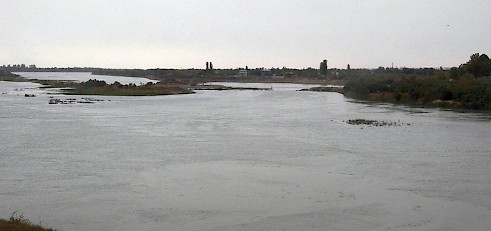
As we already noticed, they are more than just a Persian name known from Greek sources. From the Greek researcher Herodotus, we learn that the Massagetes lived near the river Araxes.note Unfortunately, Herodotus’ account of this river confuses the Armenian Araxes, the Oxus, and the Jaxartes in Central Asia,note but we can exclude the first river because the Sacae did not inhabit Armenia, and we can exclude the second river because the valley of the Oxus is inhabited by the Bactrians and Chorasmians. (More on this below.) This means that the Massagetes lived along the remaining river, the Jaxartes.
Two Sources
The same author, Herodotus, tells that the Persian king Cyrus the Great tried to subject the Massagetes and was killed in action. (From cuneiform sources, we know that Cyrus died in 530 BCE.)
It is likely that Herodotus used an unidentified source that was also used by the Graeco-Roman geographer Strabo. His account of the tribes of Central Asianote is better organized than the story by Herodotus, who was essentially telling about the demise of Cyrus and used the information from the unidentified source only to create an exotic context for what he calls the greatest battle between two barbarian nations.note
A Primitive Society
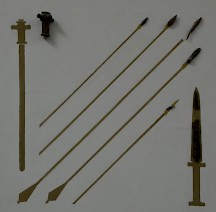
From Strabo, we learn that some of the Massagetes lived in the mountains, others on the plain, others in the marshes along the rivers, and others on the islands in the marshes. These groups had different ways of life: the islanders and the mountain people ate fruits and roots; the marsh people were fish-eaters and used the pelts of seals; the Massagetes of the plain had a diet of fish and dairy. There were no farms, Strabo tells us: these people were nomads, traveling with wagons and living with their sheep, which they did not slaughter but spared for wool and milk. In other respects, Strabo adds, the Massagetes were like the Scythians, pointing at
their burials, customs, and their way of living as a whole, are alike, that is, they are self-assertive, uncouth, wild, and warlike, but, in their business dealings, straightforward and not given to deceit.note
About the burial customs, Strabo has more to say:
They consider it the best kind of death when they are old to be chopped up with the flesh of cattle and eaten mixed up with that flesh. But those who die of disease are cast out as impious and worthy only to be eaten by wild beasts.note
This cannibalism is also mentioned by Herodotus.note Both authors tell that the Massagetes are good horsemen and foot-soldiers, who use bows, short swords, breastplates, and battle axes.note The Massagetes found gold and copper in their country, some iron, and no silver.note Copper is indeed found in the Fergana valley, while gold is found in the west of modern Uzbekistan. Herodotus and Strabo agree that the Massagetes know marriage, but that the men are not very monogamous, and have intercourse with the wives of other men.
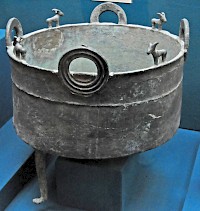
The information above is contradicted by archaeology, which makes it clear that there was agriculture in what is now northern Uzbekistan. The unidentified source behind Herodotus and Strabo is essentially a sociological speculation about a primitive nation that lives far from everything that the author considered civilized (i.e., Greece.) It is therefore hard to take this account very seriously, although it would be wrong to ignore all of it: some points, like the presence of gold and copper, and the absence of silver, are correct.
From this mixed bag of information, reliable and unreliable, we may obtain one glimpse of the Massagetan cosmology when we learn that they regard Helius, the sun, as the only god.note The sun's counterpart is, of course, the moon, and the Moon Sacae may have considered themselves god’s partner when they were sacrificing horses.note This custom is well-known among Indo-Iranian nations.
History
If we are to believe Herodotus, the Massagetes were responsible for the death of Cyrus, who was defeated by a queen named Tomyris.note There are several other traditions about the death of the great conqueror – for example, according to Ctesias he was killed in Indianote and according to Xenophon he had a peaceful death in his palacenote – and we cannot check Herodotus’ information.
What is certain, is that after 520 BCE, one of Cyrus’ successors, Darius the Great, expanded Persian power to Central Asia. His own account of this war, an appendix to the Behistun Inscription, does not mention the Massagetes, however, suggesting that they remained outside direct Persian control.
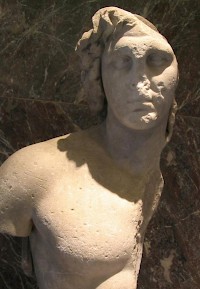
Almost two centuries later, they are mentioned in passing by the Alexander historians, who have little to add to what we already know and only tell us that in 329-327 BCE, some of the Massagetes supported the people who resisted Alexander the Great.note The fact that they figure not more prominently, and the fact that they are not mentioned in the Behistun Inscription, constitute additional proof that they lived near the Jaxartes, not near the Oxus.
In the third century BCE, there was a movement of nomads from Central Asia to the south. The Parni, a subgroup of the Dahae, invaded Parthia, and the existing tribal federations came to an end. Sacan tribes would overrun what is now called Afghanistan and invade the valley of the river Indus. The remaining Dahae and Massagetes may have been among these people.
However that may, after this migration, we hear nothing about the Massagetes anymore. If they are mentioned, it is just a name for all inhabitants east of the Caspian Sea, just to fill a lacuna on a map.
Writing towards the end of the fourth century CE, Ammianus Marcellinus presents the Alans as descendants of the Massagetes,note while Procopius says the same of the Huns: they used to be called Massagetes.note Those remarks probably were meant to give fitting savage ancestors to the tribes that threatened the Roman Empire in Late Antiquity, but are not more reliable than, for example, Gregory of Tours writing about the Frankish king Clovis as a Sugambrian.note